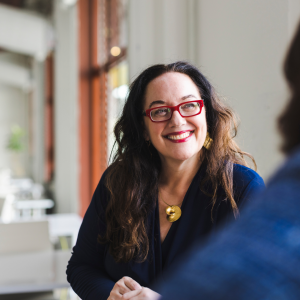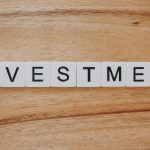Have the worsening markets of 2022 and beyond had an outsized impact on female founders within the venture capital space? Data from research firm PitchBook suggests that in fact, the opposite may be true. AltAssets’ Karin Wasteson investigates the impact woman are having on the VC and startup sector in part one of a two-part series on gender diversity in the alternative assets.
Slower deal activity has been a hallmark of the last 12 months, as investors continue to attempt to navigate choppy financial waters. But “All In: Female Founders in the US VC Ecosystem”, a Pitchbook report that came out in November, shows that although the economic issues that arose in 2022 are indeed reflected in reduced dealmaking, female founders managed to close more deal value in Q3 2022 than at any other time before the records set in 2021.
Room for optimism, then – and report author Annemarie Donegan believes female representation at high levels can have a big impact on both core business ideas and growth prospects.
She said female angel investors and decision-makers within VC firms have an important role in creating the opportunities female-founded companies need – highlighting the report findings on the relationship between female investors and the female founders they invest in as of particular interest.
“You are going to have founders that, if they are targeting a female market, pitching to an investor that might not have the same understanding that a female investor would, is something that is contributing to the overall lack of representation for women,” she said.
Getting that representation right is important. “The relationship between check writers/decision makers and the founders is critical, especially in those initial stages of a company forming. You have a high level of failure for startups, especially in those earlier stages, so having an investor that really understands the pitch and the potential for a company to reach the market and having an investor that is there in their corner supporting them is impactful and can definitely drive a company towards growth or dissolution,” she said.
“There are a lot of different factors that play into a company’s success beyond those initial ideas, so having a strong base of investors is critical, having genuine representation on that side of the table as well, can give opportunities for companies that might otherwise be overlooked,” Donegan added.
In 2021 female-founded companies closed a record $57.1bn across 4,430 deals, during a year that was exceptional in terms of overall deal values.
And Q3 2022 showed US VC deal value for female founders reached $32.4bn across 2,811 deals, which means 2022 turned out to be the second-biggest year for venture-backed female founders in terms of deal value.
“Female VC founding teams in both the US and Europe have a long way to go to match the level of funding that male founding teams receive, but top deals and the recent record levels of VC funding across the board are encouraging signs,” she said.
As total deal value reached $154.9bn for all-male founded companies, while just $3.6bn for all-female founded companies, funding between male and female teams still varies greatly, though.
“There’s been a little bit of progress in terms of female founded teams representation in the ecosystem. However it remains a very small portion of the total,” commented Donegan.
She says education plays an important part in increasing the funnel of talent, both for founders and for check writers. Moving up the ranks within VC firms so that women will be able to write checks is crucial. And to build out the funnel [of available talent] overall.
Donegan suggests that the VC arena could also increase female representation by focusing on having press around successful female founded companies and seeing representation for younger women. But also by increasing pressure from the public, so that transparency about what firms are doing and who works for them increases.
There’s still a long way to go to close the funding gap, but despite this, the data shows female founding teams pulling through the macro climate well.
Female-founded companies represent 25.5% of total VC deal count in the US, down slightly from 26.4% in 2021. Their proportion of total deal value remains flat from 2021, at 17.2%.
It is a positive signal however that the difficult conditions for startups raising capital are not disproportionately affecting female founders (like during the pandemic in 2020, when the female proportion of total deal value fell to 14.5%).
Another thing that the report showed is that median valuations have risen across the board for US early-stage VC companies. Female-founded teams saw slightly higher growth, at 39.2%, compared with 33.3% for the overall VC population.
“Recognizing the business case for having a diverse portfolio with diverse founders is critical for the future of venture capital,” said Payal Dalal, Senior Vice President of Social Impact, International Markets at the Mastercard Center for Inclusive Growth.
“Diversity programs shouldn’t be side of desk or seen as a ‘nice to have,’ because having a portfolio of founders from a variety of backgrounds will lead to better returns and stronger governance. VCs should prioritize intentionality when building their pipelines of investments, anticipating and addressing the institutional, cultural, and socio-economic hurdles that underserved entrepreneurs might face in accessing venture capital,” Dalal continued.
Julie Abrams is founder and general partner of How Women Invest. Her organisation has conducted a study called “How Women (and Men) Invest in Startups”, which found that contrary to the belief that women are more risk averse, in fact women are more risk aware and men are more likely to engage in risky behaviour when it comes to investing.
“When women are the decision-makers in venture capital, they invest equally in women and men. They are also more value-based when they invest,” she said.
“We don’t have enough women decision-makers in venture. Today we have an opportunity to get more women investing in venture and demanding gender accountability with their dollars. Women need to see women who look like them investing, and we need to demystify the lingo, making them feel invited,” Abrams explained. She recommends finding a firm or organisation that “fits” your values.
Abrams has specific advise on how to get more women to become VC investors or invest in female startups: “In order for you to run for office in the US someone has to tap you on the shoulder nine times to say ´you should really run for Mayor.´ So the idea is that you need to be nudged many times to start investing”.
Copyright © 2023 AltAssets



























